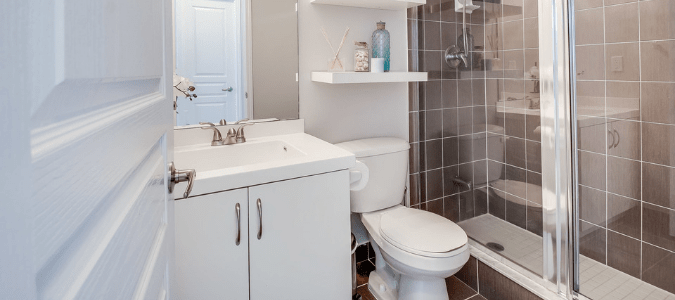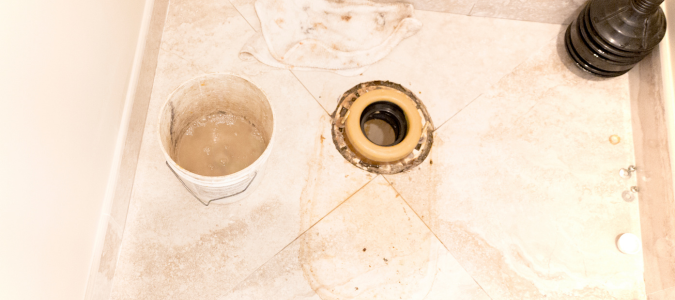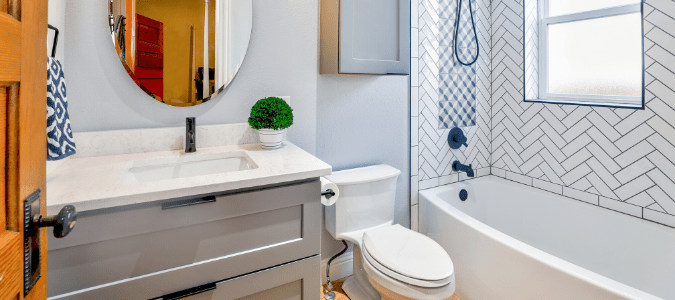Many homeowners take their toilets for granted, but just like any plumbing fixture, they need proper maintenance. Toilets can cause major indoor leaks, wasting as much as five gallons a minute. You can save a lot of water when you pay attention and catch problems early.
If you suspect your toilet is leaking into the bowl, here’s how to confirm your suspicions and troubleshoot the issue. But as with most plumbing issues, contacting the pros is the best solution. Professional plumbers have the tools and expertise to determine the cause and provide an effective solution.
How To Know If Your Toilet Leaks Into the Bowl
If you think your toilet leaks into the bowl, the first telltale sign is a massive spike in your water bill. Here are other ways to determine if you have a leaking toilet.
Use Food Coloring
Pour a bit of food coloring into the toilet tank and mark the water level inside. Turn off the water supply to the toilet and wait 20 minutes. Check the toilet bowl and see if the water is colored. If it is, the water in the tank leaks into the bowl. You should also check if the water level in the tank has dropped. If it has, that indicates a flush valve issue. But if it is the same, the flapper or fill valve is causing the leak.
Water Test
If you don’t have food coloring on hand, you can do the water test instead. Ensure the water tank is full, then shut off the water supply. Don’t flush the toilet. Next, mark the water level inside the tank and wait 30 minutes. If the water level drops, make a new mark and let time pass again. Repeat this until the water level stops dropping.
The final water level will tell you where the leak is. If the water stops at the flapper, it can mean two things. It’s either a worn-out flapper or a damaged drain seat that’s causing the leak. You need to replace these parts to solve the problem. But if the water drains to the bottom, you are dealing with a worn-out gasket, meaning the flush valve no longer has a tight seal. The best solution is to replace the flush valve.
How to Replace the Toilet Flush and Fill Valves
Once you’ve determined the cause of the toilet leak, you can move on to replacing the worn-out or damaged parts or having a professional plumber do it. The process shouldn’t be too complex, but it can be time-consuming if it is your first time. Here is how to replace your toilet’s flush or fill valve.
Flush Valve
Turn off the toilet’s water supply and let the water inside the tank drain. Detach the tank and flip it upside down to access the parts. Lift the gasket and remove the nut that attaches to the tank. Extract the flush valve assembly and replace it with the new one. Reattach the gasket and screw the tank back in its place.
Fill Valve
Fill valve replacement is much easier as you don’t have to detach the tank from the toilet bowl. Shut off the water, flush the toilet to drain the water in the tank and unscrew the water supply line. Fish out the fill valve assembly and slide in the new one. Have something to catch the water that might flow out during this process. Replace the refill tube and water supply line and turn on the water.
If you get stuck during the replacement process or don’t want to take the DIY route, let a professional plumber take over. They’ll have your toilet running smoothly again in no time.
What To Do When You Have a Broken Toilet Flange
A toilet flange is a pipe fitting that secures the toilet to the floor and connects it to the drainage system. You’ll know it’s broken if you rock while sitting on the toilet. Other warning signs include leaks, soft flooring and water spots on the ceiling underneath. If you notice these issues, it might be time to have the flange replaced. It’s best to have a professional replace this part. Here are the steps involved in this process.
Remove Old Flange and Obstructions
A professional will see the old flange when they remove the toilet. They use a metal-cutting blade or angle grinder to remove the bolts and other visible obstructions. Then, they ensure everything is flush with the concrete and nothing is jutting out. They will keep the bolts if they are still in good condition, but a pro will toss them if they are rusty.
As a safety precaution, a plumber will stuff an old rag into the open pipe after removing the toilet and before doing any work. That will stop sewer gasses from coming into your home.
Remove Wax Ring
After successfully removing the flange, the wax ring around the drain hole will be visible. Thick and sticky wax rings can be hard to remove, so they may use a putty knife to scrape off the wax ring before collecting the pieces in a plastic bag and disposing of them.
Purchase New Toilet Flange
After removing the wax ring, the plumber will have a complete view of the drain pipe. They will measure its diameter carefully because the new flange needs to match it perfectly.
Put T-Bolts in New Flange
A professional will then slot the T-bolts upside down into the new flange, ensuring the threaded shafts point up. When in place, they can better visualize how to position the toilet when putting it back.
Place Flange in the Drain Hole
Next, a plumber will push the flange into the drain hole and use the T-bolts to reference positioning, ensuring they are at the same distance from the wall behind. That guarantees that the toilet will face straight forward and not to either side. Then, they’ll double-check that it fits snugly into the drain hole without any gaps.
Drill Into Concrete
A plumbing professional will then drill through the four holes in the flange and into the concrete floor before using the depth gauge of the hammer drill to know how deep to go. They take care not to angle toward the sewer pipe since damaging its top lip will require a complicated and costly repair.
Secure Toilet Flange
Finally, a professional will use concrete screws to secure the flange into place on the concrete floor. Once the flange is in place, they can install a new wax ring and return the toilet to its spot.
Don’t attempt to replace a broken toilet flange on your own. Most homeowners don’t have the necessary skills to perform this task. You could end up doing more harm than good. If you suspect your toilet has a broken flange, let a professional plumber handle the situation. They can do the job seamlessly.
Why You Hear Noise From the Pipes When the Toilet Flushes
The only noise that should come from your toilet is flushing. If you hear loud banging noises after flushing, that’s most likely a water hammer issue. Ignoring it can lead to expensive problems later on.
Water hammering is similar to a vehicle pile-up. Imagine a long line of cars on the road, and the one in front suddenly hits the brakes. That will cause all the other vehicles to collide with each other. That’s the same situation inside your pipes. When you flush, a valve opens to let water in. But when that valve suddenly closes, the water has nowhere to go and will crash into the pipes. That causes the banging sound you hear.
Water hammering won’t cause an immediate negative effect. But if it persists, the pressure can eventually damage or loosen the pipe’s fittings and joints. That can cause a major water leak in your house. You can solve the water hammering issue with a simple hammer arrestor. It provides an air cushion that will absorb the shock of the water pounding into the pipes. If that doesn’t resolve the issue, contact a professional plumber to assess the situation.
Let a Plumbing Professional Take Care of Your Toilet Problems
It can be frustrating for the whole family when the toilet isn’t working as it should. Whether you are dealing with a leak, a broken flange or a toilet making noise, a professional plumber can help. It is best to contact one once you notice signs of a toilet problem to prevent further damage.
The plumbing professional will come to your home, diagnose the issue and provide a solution. The plumber will do the necessary repairs or replacements and have your toilet running like new.
ABC Can Help With Your Toilet Problems
When dealing with plumbing problems, it’s not worth making a mess yourself. Instead of trying to learn the ins and outs of plumbing, contact ABC Home & Commercial Services. Our licensed professionals can efficiently diagnose and repair any plumbing issue you may have. In cases where a repair isn’t possible, we can help you decide which type of toilet works best for you and then install it.



